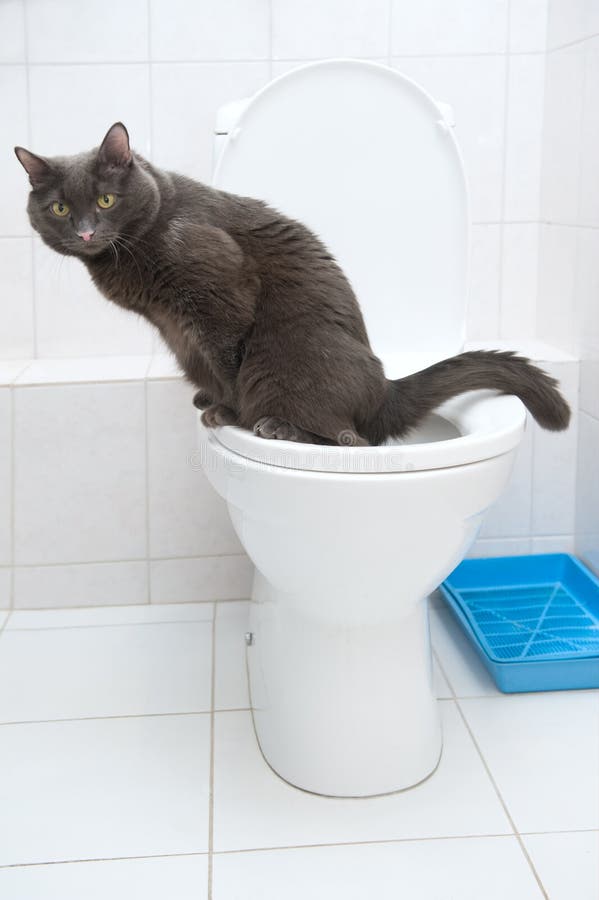Why Flushing Cat Poop Down Your Toilet Is Harmful - Tips for Correct Disposal
Why Flushing Cat Poop Down Your Toilet Is Harmful - Tips for Correct Disposal
Blog Article
The publisher is making a number of good observations relating to Don’t flush cat feces down the toilet as a whole in the article down the page.

Intro
As pet cat owners, it's necessary to be mindful of exactly how we get rid of our feline pals' waste. While it may seem hassle-free to purge pet cat poop down the commode, this method can have detrimental effects for both the atmosphere and human health.
Alternatives to Flushing
The good news is, there are much safer and much more liable methods to deal with pet cat poop. Consider the following choices:
1. Scoop and Dispose in Trash
One of the most typical method of getting rid of feline poop is to scoop it into a naturally degradable bag and throw it in the garbage. Make sure to use a dedicated trash inside story and throw away the waste quickly.
2. Usage Biodegradable Litter
Select naturally degradable pet cat trash made from products such as corn or wheat. These clutters are environmentally friendly and can be securely taken care of in the trash.
3. Hide in the Yard
If you have a yard, take into consideration burying feline waste in a designated area far from veggie yards and water sources. Be sure to dig deep enough to avoid contamination of groundwater.
4. Install a Pet Waste Disposal System
Purchase a pet garbage disposal system particularly designed for cat waste. These systems use enzymes to break down the waste, decreasing smell and ecological impact.
Wellness Risks
Along with environmental problems, flushing feline waste can likewise position health dangers to people. Pet cat feces may contain Toxoplasma gondii, a parasite that can cause toxoplasmosis-- a potentially serious health problem, specifically for expecting females and people with weakened body immune systems.
Environmental Impact
Purging pet cat poop presents dangerous microorganisms and bloodsuckers right into the supply of water, posing a substantial threat to water ecosystems. These impurities can negatively influence aquatic life and concession water high quality.
Conclusion
Accountable pet dog ownership prolongs past giving food and sanctuary-- it additionally entails proper waste monitoring. By avoiding purging pet cat poop down the commode and selecting alternate disposal techniques, we can minimize our environmental impact and shield human wellness.
Why Can’t I Flush Cat Poop?
It Spreads a Parasite
Cats are frequently infected with a parasite called toxoplasma gondii. The parasite causes an infection called toxoplasmosis. It is usually harmless to cats. The parasite only uses cat poop as a host for its eggs. Otherwise, the cat’s immune system usually keeps the infection at low enough levels to maintain its own health. But it does not stop the develop of eggs. These eggs are tiny and surprisingly tough. They may survive for a year before they begin to grow. But that’s the problem.
Our wastewater system is not designed to deal with toxoplasmosis eggs. Instead, most eggs will flush from your toilet into sewers and wastewater management plants. After the sewage is treated for many other harmful things in it, it is typically released into local rivers, lakes, or oceans. Here, the toxoplasmosis eggs can find new hosts, including starfish, crabs, otters, and many other wildlife. For many, this is a significant risk to their health. Toxoplasmosis can also end up infecting water sources that are important for agriculture, which means our deer, pigs, and sheep can get infected too.
Is There Risk to Humans?
There can be a risk to human life from flushing cat poop down the toilet. If you do so, the parasites from your cat’s poop can end up in shellfish, game animals, or livestock. If this meat is then served raw or undercooked, the people who eat it can get sick.
In fact, according to the CDC, 40 million people in the United States are infected with toxoplasma gondii. They get it from exposure to infected seafood, or from some kind of cat poop contamination, like drinking from a stream that is contaminated or touching anything that has come into contact with cat poop. That includes just cleaning a cat litter box.
Most people who get infected with these parasites will not develop any symptoms. However, for pregnant women or for those with compromised immune systems, the parasite can cause severe health problems.
How to Handle Cat Poop
The best way to handle cat poop is actually to clean the box more often. The eggs that the parasite sheds will not become active until one to five days after the cat poops. That means that if you clean daily, you’re much less likely to come into direct contact with infectious eggs.
That said, always dispose of cat poop in the garbage and not down the toilet. Wash your hands before and after you clean the litter box, and bring the bag of poop right outside to your garbage bins.
https://trenchlesssolutionsusa.com/why-cant-i-flush-cat-poop/

Hopefully you enjoyed reading our topic about Can You Flush Cat Poo or Litter Down the Toilet?. Thanks so much for spending some time to read our post. Sharing is nice. One never knows, you may just be helping someone out. We enjoy reading our article about How to Dispose of Cat Poop and Litter Without Plastic Bags.
Request Estimate Report this page